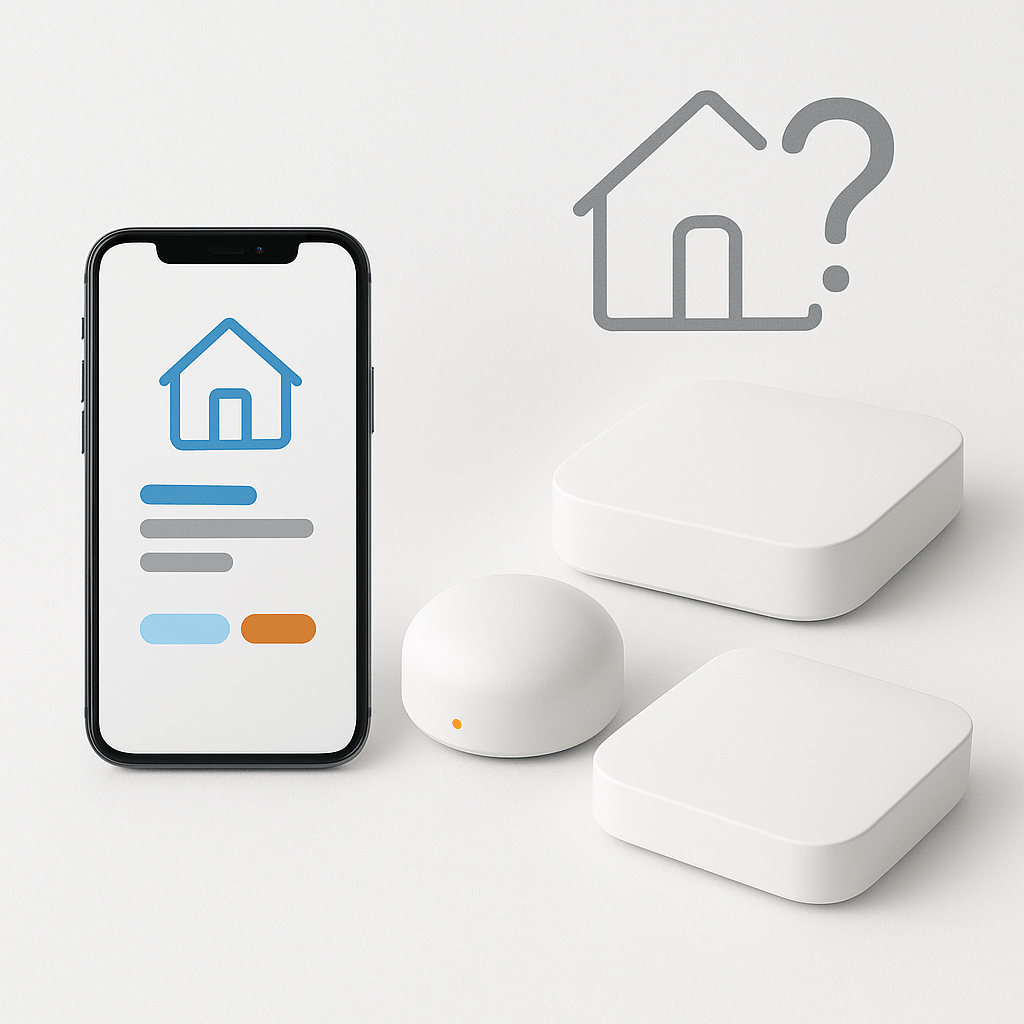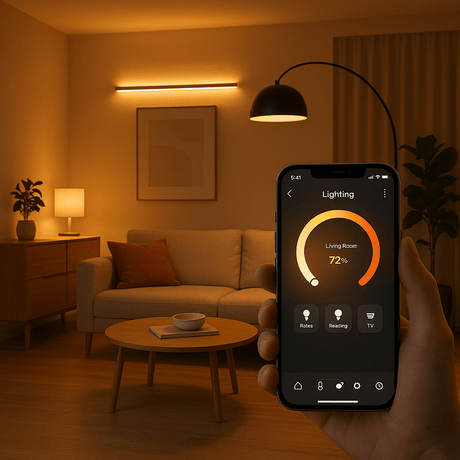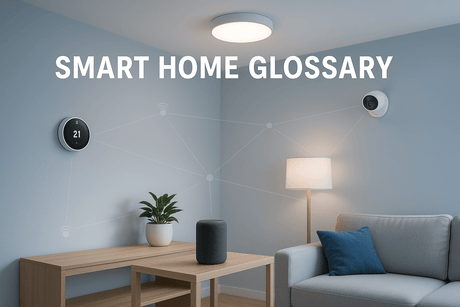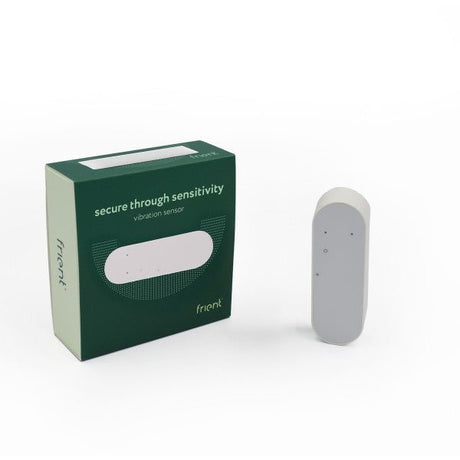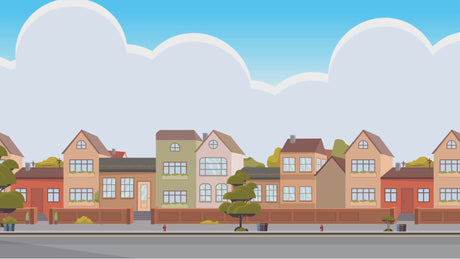The smart home controller, often referred to as a hub or gateway, serves as the indispensable central nervous system of your automated home. It functions as the crucial translator, command centre, and automation engine, enabling your diverse collection of smart devices – particularly those using dedicated protocols like Z-Wave and Zigbee – to communicate effectively with each other and respond to your commands via smartphone apps, voice assistants, or automated schedules. Selecting the right controller is arguably the most critical decision when building a smart home, as it dictates the system's reliability, responsiveness, device compatibility, automation capabilities, and future potential.
However, the market presents a variety of controller types, each with distinct strengths and weaknesses: user-friendly dedicated hubs, flexible USB dongles paired with powerful software, and even integrated solutions within smart speakers. Navigating these options can be daunting. This comprehensive guide will compare the primary controller types, delve into key features, and provide detailed considerations to help you identify the perfect hub for your specific needs and technical comfort level.

Why is a Dedicated Controller Often Necessary?
Many simple smart devices, like some smart plugs or cameras, utilize Wi-Fi to connect directly to your home router and their respective cloud services. While convenient for single-device setups, relying solely on Wi-Fi for a comprehensive smart home has drawbacks:
- Network Congestion: Dozens of Wi-Fi devices can overwhelm your home router, potentially impacting performance for all connected devices (including computers, phones, and streaming services).
- Power Consumption: Wi-Fi radios are relatively power-hungry, making them unsuitable for small, battery-powered devices like door/window sensors or motion sensors that need to last months or years on a single battery.
- Reliability & Range: Wi-Fi wasn't designed for the low-bandwidth, high-reliability needs of control systems. Interference and range limitations can be problematic.
This is where protocols like Z-Wave and Zigbee excel. They operate on different radio frequencies, use significantly less power, and create robust mesh networks. In a mesh network, devices can relay signals for each other, extending range and improving reliability – if one path is blocked, the signal can often find an alternative route.
However, your computer or smartphone doesn't natively speak Z-Wave or Zigbee. The smart home controller acts as the essential bridge, containing the necessary Z-Wave and/or Zigbee radios to communicate with your devices. It connects to your home network (via Ethernet or Wi-Fi) and the internet, allowing you to:
- Manage the Mesh Network: Adding/removing devices, optimizing communication routes.
- Translate Protocols: Enabling communication between different device types and your network.
- Run Automation Logic: Executing rules like "If motion is detected, turn on the light."
- Provide User Interface: Offering apps or web interfaces for control, monitoring, and configuration.
Types of Smart Home Controllers: A Closer Look
Let's examine the common controller archetypes in more detail:
-
Dedicated Smart Home Hubs:
- Description: Standalone physical devices purpose-built to be the central controller. They typically boast user-friendly setup processes, polished mobile apps, and web interfaces.
- Hardware: Usually include built-in Z-Wave Plus and Zigbee 3.0 radios, Ethernet ports, and sometimes Wi-Fi, Bluetooth, or even Thread radios for future compatibility (e.g., Matter).
- Software: Run proprietary software focused on ease of use, device compatibility, and automation rule creation. Often emphasize local processing for increased reliability and speed.
- Examples: Hubitat Elevation, Homey Pro, Aeotec Smart Home Hub (works with SmartThings platform).
- Target User: Those seeking a balance of power and user-friendliness, preferring an off-the-shelf solution with good support and a curated device ecosystem.
- USB Sticks (Z-Wave/Zigbee Dongles) + DIY Software:
- Description: Small USB adapters containing a Z-Wave or Zigbee radio chip. These plug into a separate computer that runs open-source or third-party smart home software.
- Hardware: The USB stick itself is inexpensive, but requires a host computer – commonly a Raspberry Pi, an old laptop, a Network Attached Storage (NAS) device, or a dedicated mini-PC/NUC. Performance depends heavily on the host computer's specs.
- Software: Powerful, highly customizable open-source platforms like Home Assistant, Domoticz, or openHAB. These platforms offer vast device compatibility (often community-driven) and extremely flexible automation engines.
- Examples: Aeotec Z-Stick, Zooz Z-Wave Stick, ConBee II (Zigbee), Sonoff Zigbee 3.0 USB Dongle Plus – paired with Home Assistant software.
-
Target User: Tech enthusiasts, tinkerers, and users who prioritize maximum customization, control over their data (local processing), broad device compatibility (including obscure or DIY devices), and are comfortable with a steeper learning curve involving software installation, configuration files, and potentially some command-line interaction.

-
Software-Based Hubs (Commercial, Running on Your Hardware):
- Description: Similar to the DIY approach but using commercial software designed to run on user-provided hardware. This is less common now but includes options like HomeSeer software.
- Hardware: Requires a compatible computer (often Windows-based).
- Software: Commercial software often offering a balance between the power of DIY solutions and the polish/support of dedicated hubs, but usually comes with a software license cost.
- Target User: Users wanting more power than typical dedicated hubs but preferring a commercially supported software package over open-source options.
-
Smart Speakers/Displays with Built-in Hubs:
- Description: Devices primarily designed as voice assistants or smart displays that include a secondary Zigbee (and sometimes Thread) radio.
- Hardware: Examples include certain Amazon Echo models (Echo 4th Gen, Echo Plus, Echo Show 10) and Google Nest Hub Max (Thread only).
- Software: Relies on the voice assistant's platform (Alexa, Google Home) for device discovery and basic automation routines (usually cloud-dependent).
- Examples: Amazon Echo (4th Gen), Echo Show 10.
- Target User: Users primarily interested in basic voice control of compatible Zigbee devices (like bulbs or plugs) and simple routines, who already own or plan to buy the smart speaker/display. Not suitable for users needing robust Z-Wave support, complex automations, or extensive local control.
Feature Comparison Deep Dive
Let's revisit the comparison table with more nuance:
|
Feature |
Dedicated Hubs (e.g., Hubitat, Homey) |
USB Sticks + Software (e.g., Home Assistant) |
Smart Speaker Hubs (e.g., Echo) |
|---|---|---|---|
|
Ease of Use |
★★★★☆ (Generally intuitive GUI/App) |
★★☆☆☆ (Requires setup, config files, YAML) |
★★★★★ (Voice-centric, simple app) |
|
Protocol Support |
Z-Wave Plus, Zigbee 3.0 common; some add BT, Thread/Matter |
Depends on stick(s); Excellent Z-Wave/Zigbee options; BT via host |
Primarily Zigbee; Limited/No Z-Wave; Some add Thread/Matter |
|
Automation Power |
★★★★☆ (Powerful rules, often local) |
★★★★★ (Extremely flexible, complex logic) |
★★☆☆☆ (Basic routines, often cloud) |
|
Device Compatibility |
★★★★☆ (Extensive curated lists) |
★★★★★ (Vast, community integrations) |
★★★☆☆ (Limited curated ecosystem) |
|
Local Control Focus |
★★★★★ (Hubitat) / ★★★★☆ (Others) |
★★★★★ (Designed for local control) |
★☆☆☆☆ (Primarily cloud-dependent) |
|
Customization |
★★★☆☆ (Good within platform limits) |
★★★★★ (Highly customizable UI & logic) |
★★☆☆☆ (Limited options) |
|
Hardware Cost |
Moderate-High (£100-£300+) |
Low (Stick £30-£50) + Host PC Cost (£50-£200+) |
Low (If already own speaker) |
|
Setup Effort |
Moderate (Plug in, App setup) |
High (OS install, Software config, Pairing) |
Low (App pairing) |
|
Community Support |
Active official/user forums |
Very large, active, technical community |
Large user base, less technical |
|
Data Privacy |
Generally good (esp. local hubs) |
Excellent (Self-hosted, user controls data) |
Concerns due to cloud nature |
|
Future-Proofing |
Depends on vendor updates; Matter emerging |
High (Open source adapts); Matter support growing |
Depends on Amazon/Google strategy |

Key Considerations When Choosing (Expanded)
-
Technical Skill & Time Commitment: Be honest about your comfort level and available time. Setting up Home Assistant on a Raspberry Pi is a rewarding project for enthusiasts but can be frustrating if you just want something that works quickly. Dedicated hubs offer a much gentler learning curve.
-
Primary Protocols (Z-Wave vs. Zigbee & Beyond):
-
- Z-Wave: Known for strict certification (ensuring interoperability), generally longer range in open air, and operating on a less crowded frequency band (~900 MHz, varies by region) reducing interference from Wi-Fi/Bluetooth.
- Zigbee: Operates on the crowded 2.4 GHz band (same as Wi-Fi/Bluetooth), potentially leading to interference, but offers faster data rates and supports a vast number of affordable devices, especially from Asia. Zigbee 3.0 improved interoperability significantly.
- Recommendation: For maximum flexibility, choose a controller supporting both Z-Wave Plus and Zigbee 3.0. Vesternet champions both for their smart home reliability.
- Future: Consider controllers adding Thread support for native Matter compatibility.
-
Local vs. Cloud Control: This is crucial. Local control means automations run directly on the hub within your home network, independent of your internet connection or external servers. Cloud control means commands and automations are processed on the vendor's servers.
-
- Local Pros: Faster response times, increased reliability (works if internet is down), enhanced privacy (less data sent externally).
- Cloud Cons: Slower responses, system failure if internet or vendor servers are down, potential privacy concerns.
- Recommendation: Prioritize controllers emphasizing local control (Hubitat, Home Assistant) for core functions.
-
Desired Level of Automation & Customization: Do you need simple "If This, Then That" rules, or do you envision complex scenarios involving multiple conditions, variables, delays, and notifications? DIY software offers unparalleled power here, followed by capable dedicated hubs. Smart speakers are generally limited to simpler routines.
-
Ecosystem & Device Compatibility: Check the official compatibility lists for dedicated hubs. For DIY software, check the platform's integration documentation and community forums – compatibility is usually broader but sometimes requires more configuration.
-
Voice Assistant Integration: Most dedicated hubs and DIY solutions integrate well with Alexa and Google Assistant. Ensure your chosen controller supports your preferred voice assistant.
-
Budget (Total Cost of Ownership): Factor in the hub/hardware cost, potential software licenses (less common now), and the cost of the host computer if going the DIY route. Consider long-term value and flexibility.
-
User Interface: How do you prefer to interact with your system? A polished mobile app? A customizable web dashboard? Voice commands? Try demos or watch reviews if possible.

Finding Your Controller at Vesternet
Vesternet focuses on providing robust and reliable controller options that form the backbone of a powerful smart home, primarily leveraging Z-Wave and Zigbee:
-
Smart Home Hubs & Gateways: Explore dedicated controllers like Hubitat Elevation (strong local control focus) or Homey Pro (wide protocol support, user-friendly interface), known for their strong feature sets and compatibility with devices sold by Vesternet.
- Z-Wave/Zigbee USB Sticks: Find reliable Z-Wave Plus and Zigbee 3.0 dongles from reputable brands like Aeotec and Zooz, perfect for pairing with platforms like Home Assistant running on your own hardware.
Choosing the right smart home controller is a foundational investment. By carefully evaluating your technical comfort, desired features, the importance of local control, and the types of devices you plan to integrate, you can select a hub that will act as a dependable and powerful brain for your automated home, enabling convenience, security, and efficiency for years to come.

